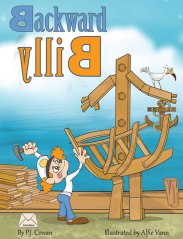Through my years in publishing, I have worked with some really great authors. All of these authors approach self publishing with their own agenda and expertise. Since the whole point of my blog and book is to look at the reality of self-publishing, I thought it would be nice to do a series of author interviews. Welcome to ‘Word on the Street’.
My author interviews will consist of 6 questions about them, their book and their experience. You will get the good, the bad and the ugly. Not all real self publishing stories are full of rainbows and butterflies – it can suck sometimes too.
John Moore and I will be speaking at the O’Fallon Writers Guild Writers Workshop on Saturday September 7, 2013 starting at 8:00 A.M. The event will be held at Lindenwood University Belleville Campus. For more information on the event, click here.
….Come on down, John Moore
Real Answers Real Authors: Why did you decide to publish?
John: This is a bit of a long story; nevertheless it answers the question. Several years ago, after my daughter divorced, I became a de facto father to my grandson who was twelve at the time. Over the course of the next few years, I did my best to help him straighten his life out and emphasize his education. Starting Junior High he didn’t like English. Even though he was good in math and science, writing and reading the English language seemed like a waste of time to him. So, I looked for ways to subtly change his attitude. One night when we were camping along one of the Missouri “float” rivers, he asked what kind of CDs I liked when I was his age. (We’re fifty years apart in age.) He was surprised when I told him we didn’t have such things then, along with a lot of other things that are around now. That discussion led to our contrasting a great many areas, then and now. Then, I asked him what he thought would be different for his grandson fifty years away. His imagination of the future was phenomenal. Together we’d pick a subject—TV, world affairs, petroleum, war, lifestyles, etc.—and imagine what life would be when he had a grandson in fifty more years. We began a list. The list grew and we agreed to put it in a time capsule and open it in fifty years to see how right or wrong we were. However, that wasn’t satisfying, nor did it do anything for his enthusiasm about English. So, I suggested we work the material we’d listed into a short story. It would be a story with his yet to be born grandson as the hero. I wrote some and he wrote some and what started out to be a short story got longer. In fact, it became a novel, which we self-published. My family nick name is Poppies, so he thought that would be a good name to be called when he become a grandfather too. So the title of the story became, “A Journey with Poppies.” It is a story of him and his grandson fifty years into the future. When he went into Eighth Grade, he felt a lot different about English.
RARA: What titles have you published to date?
John: A Journey with Poppies, The Head of Khalid Salaam, Frigby’s War.
RARA: How are you currently marketing your book and what has given you the best results?
John: I have tried book signings, e-mails to friends and family, meeting with book clubs, advertising on Web Sites related to the book, word of mouth, and prayer, hope, and hand-wringing. Some work. Some don’t. Unless lightning strikes, most self-published authors struggle to earn back what they paid to publish.
RARA: Are there any books or websites that you have found the most useful?
John: Not really. However, I believe there is a business out there for someone with the savvy and audacity to take self-published books and market them. Too many self-published authors are reluctant to spend the time and/or endure the pain of rejection to market their stuff. If it is truly blither, it won’t sell no matter how skillful it’s marketed. However, a third party not emotionally involved with the title and with the experience and moxie to push it on to the reading public (targeting the right sector) could be successful.
RARA: What has been your greatest challenge in self publishing?
John: You can guess from the above. It is marketing my work. I enjoy the writing; even the proofing. However, when it comes to my own creation, I’m a reluctant salesman. I believe I’m not alone in that respect.
RARA: What is the best advice or tip you can give a new and aspiring author?
John: Expect to work as hard at promoting both you and your book as you did writing it. It’s a jungle out there and survival of the fittest is the rule. Being fit in the writing business means (1) cranking out a well-written product about a subject people are interested in and (2) becoming the epitome of the door-to-door sales person who won’t take no for an answer.
AUTHOR BIO
Twenty-eight years spent in the military during the prime of life cannot help but influence one’s ideas and opinions on everything from national defense to how people are treated. I didn’t start out to be a career military officer. It just sort of happened. Coming from a lower middleclass background, the opportunity to attend a service academy solved the problem of how to pay for a college education. A subsequent graduate degree in engineering added to my commitment to the Air Force, so by then I was hooked.
Through it all, however, the pressure to be a good soldier was always pitted against a renegade attitude which was sometimes suppressed, but more often not. Growing up in the Midwest, I blended the solid WASP values I learned from my family and friends with the melting pot of attitudes and conduct I found in the military. Following my military career, I saw the other side of the coin by spending fourteen years in a private sector engineering firm. The result is that I am somewhat of a hybrid—neither a straight-laced, conservative, retired military officer nor am I a laid back, liberal Midwesterner. I have read On War by Clausewitz but I prefer Canterbury Tales by Chaucer. Writing came along in my life well after my two engineering careers had faded into the sunset.
I write because I enjoy the challenge of telling the story and revel in making it all come together. So, while I have paced the agitated halls of the Pentagon, I prefer a solitary stroll on the beach. I have seen the fervor and excitement of battle but it pales in contrast with the glimpse of a newborn baby. I write because there are stories that need to be told. Those who knew me once might say I have mellowed some. They would be right.
John Moore
918 Indian Springs Road
O’Fallon, IL 62269
618-632-6575
BOOKS AVAILABLE FOR PURCHASE AND REVIEW
A Journey with Poppies – Available as an e-book at Authorhouse.com
The Head of Khalid Salaam – Available in paperback or e-book at Authorhouse.com
Frigby’s War – Available at Createspace.com/3563818, Amazon.com, and Kindle.






